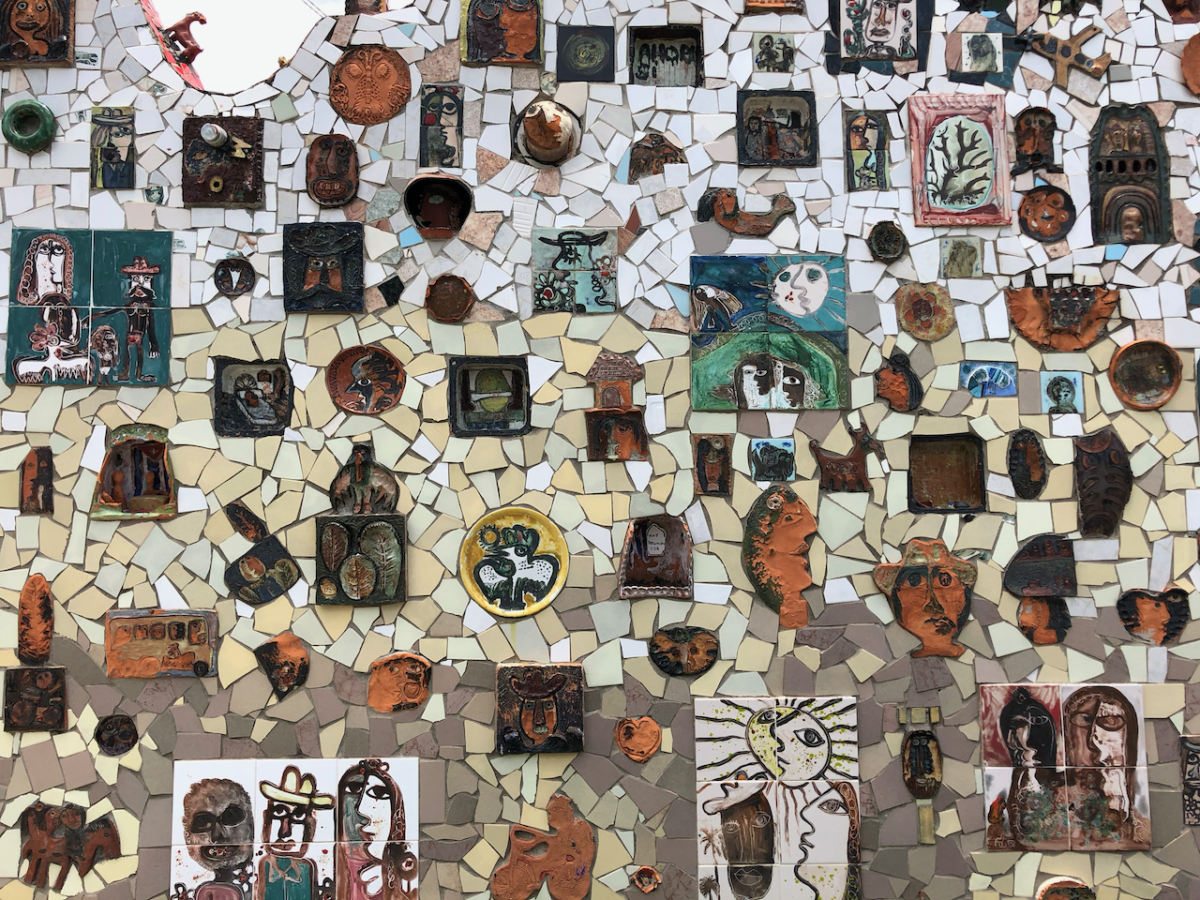I wrote a post yesterday about a display of whimsy I discovered in Sarasota. I just realized that I didn’t mention one of the most whimsical places the Complimentary Spouse and I have ever visited: Havana, Cuba.
When Americans think about Havana, they usually picture dilapidated buildings, food shortages, and old American cars kept together with rubber bands and popsicle sticks.
This is all true.1


But there’s a fanciful side to Havana as well. It’s on display at Fusterlandia and on Callejón de Hamel.
The best way I can describe Fusterlandia is this: Imagine a mosaic bomb exploded in a neighborhood, covering everything in joy and little pieces of tile. Artist José Fuster began decorating his house, and when he ran out of room, he began to transform the area. It’s an amazing display of creativity and a perfect representation of whimsy — it has no other purpose than to delight people. I’d describe the style as equal parts Gaudí, Picasso, and Haring.
Check it out for yourself:





Callejón de Hamel is an alley overrun by murals and abstract sculptures, many of which celebrate the Afro-Cuban religion of Santería. Like Fusterlandina, Callejón de Hamel started with one person, a self-taught artist named Salvador Gonzáles Escalona, decorating the area around his home. The sculptures are my favorite things, as they’re made mostly from salvaged objects like bathtubs and cash resisters. Here’s just a taste:





We now interrupt this post about whimsy with a non-whimsical thought:
While both of these places are whimsical to an outsider like me, Cubans might feel differently about Callejón de Hamel. That’s because of the ties to Santería, which I mentioned above.
The Yoruba-based religion, Santería, is embraced wholeheartedly throughout the island, with Callejón de Hamel hosting a festival dedicated to rumba and the orishas (the gods and goddesses of Santeria) every Sunday. This event brings in both tourist and citizens alike to learn about Santería’s origin and partake in rumba, a dance with African roots. …
Despite the celebrations honoring Cuba’s ties to Africa, Afro-Cuban religion, monuments dedicated to prominent civil rights figures in both Cuba and America, and the election of their first Black parliamentarian president, Esteban Lazo Hernández, in 2013, Cubans of color still feel that they are misrepresented and do not have a space to either organize or express themselves.
“In Cuba, There Isn’t a Movement for Black Thought, or Black Pride. It Doesn’t Exist.” — Pulitzer Center
Rather than dismiss the whimsicality of Callejón de Hamel, I’d prefer to think about it as a place that uses whimsy to draw attention to a serious subject. This proves that even frivolous things can be subversive and provoke serious thought. And, frankly, isn’t that a great way to think about whimsy? Even though it’s fun just for the sake of fun, it also has the power to grab you by surprise and make you think differently.
____
1Actually, the part about the American cars is hyperbole. What really keeps these vehicles together is imagination and determination. The people who own these cars can’t just pop into an Auto Zone or search online for genuine replacement parts. Parts for any type of car are hard to come by, let alone those for antiques. I’m always awed by the way these vehicles have been jerry-rigged to keep running.2
2Another thing: While the brightly-painted American cars are the ones you see in photos, they aren’t representative of the automobiles you see on the streets. Get outside the tourist areas, and you’ll see some newish Korean- and Russian-made cars, like Kias and Ladas.
